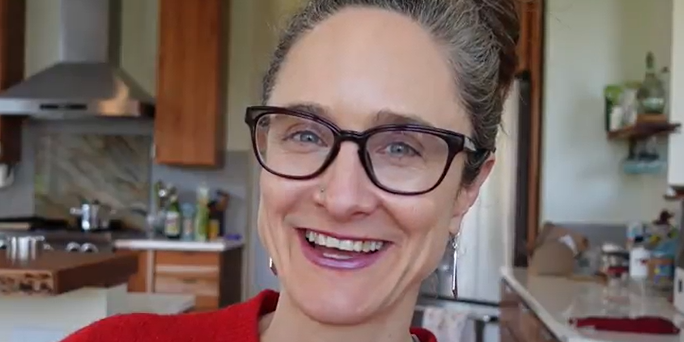In the latest Local 20/20 column in the Port Townsend/Jefferson County Leader, Eco-dietician Mary Purdy discussions ways we can minimize our impact on the environment with our eating choices.
Saving the Planet with your Fork
By Mary Purdy, MS, RDN
While not everyone always has a choice in what they eat and buy, for those who do, what goes on the menu, plate or shopping cart can make a difference for our environment. This doesn’t require perfection or a complete change in dietary habits. But since our industrialized food system is responsible for not only close to 1/3 of greenhouse gas emissions, but also for a significant amount of biodiversity loss, soil depletion, deforestation and ocean acidification, a few shifts are beneficial, and may have some healthy side effects to boot! Here are 4 ways to minimize your impact on the environment with every meaningful morsel. Please make them work for your own lifestyle, culture and preferences.
- PUMP UP THE PLANTS: Plant-based proteins use far fewer resources, including land, water and energy than animal-based foods. In order to provide space for livestock and feed, huge areas of land are deforested, reducing the potential to remove carbon from the atmosphere. Livestock additionally release large amounts of methane into the environment in the form of, yes, burps. While it’s not necessary to go vegan, replacing half of our meat with plant-based options can reduce our carbon footprint by 35%. Try a lentil soup this week or put hummus on that sammy instead of roast beef, or … just shoot for a smaller hamburger patty.
- CHOOSE FOODS GROWN WITHOUT CHEMICALS MORE OFTEN: The chemical pesticides and fertilizers used in industrial agriculture not only pollute the soil and water, but they also require significant amounts of energy to produce and can have adverse effects on wildlife and human health. Organic and “regenerative” farming use techniques that preserve the health of the soil and protect local ecosystems. It’s important to remember that some farmers use “nature-positive” practices but are not USDA-Certified Organic, due to the expense. Additionally, not every farm that is “certified organic” uses regenerative techniques! Shopping at farmers markets is a great way to connect with local producers who can tell you all about their specific farming methods.
- DITCH THE PACKAGING: The Environmental Protection Agency estimates that food packaging makes up 45% of the contents of landfills. Not only does this plastic and paper impact the environment and in turn, our climate, but many packaged foods are also highly processed and tend to be less supportive to both human and planetary health. When possible, shoot for more whole foods like fruits, vegetables, nuts and seeds, grains and beans, which you can often buy in bulk. Love the crisp of a chip? Try making your own potato chips!
- WATCH THE WASTE: 30 – 40% of food produced in the US gets wasted, which is responsible for around 6-8% of greenhouse gases. Plus, there are all the resources (energy, water, etc.) that went into creating that food that never found its way into your belly! Planning out meals for the week and eating them before they become unrecognizable in your fridge is an effective strategy. A soup or stew is also an awesome place for that droopy carrot or shriveled potato. And don’t forget, composting can be a great way to repurpose the food for soil enrichment. Lastly, love up that goofy looking eggplant at the market. It’s just as good as the “perfect” one next to it.
In the current state of many unknowns, isn’t it amazing to know that our choices and voices matter?
Bio: Mary Purdy is an eco-dietitian who speaks nationally and acts as a nutrition and sustainability advisor for a variety of organizations. She also teaches Sustainable Diets and Public Health at the Culinary Institute of America, and is part of the Local 20/20 Climate group.








